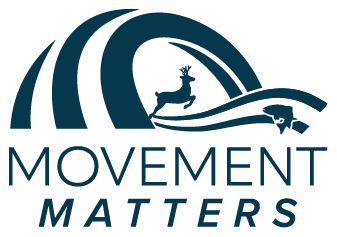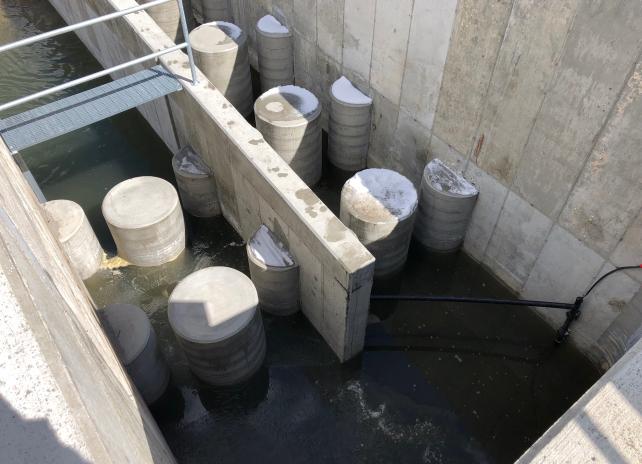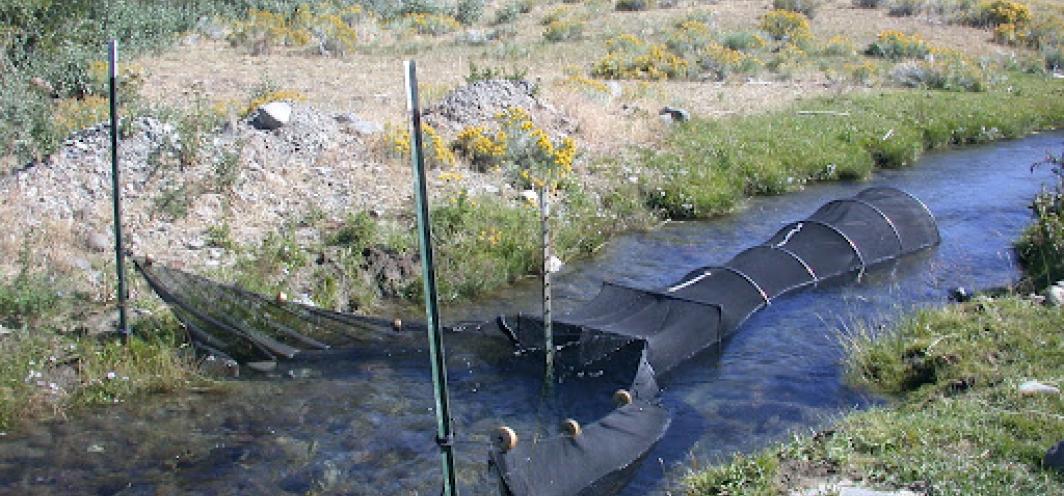The United States Geological Survey estimates more than 95 percent of water withdrawals in Wyoming are used for irrigation, so it’s no surprise most fish passage projects in the state are associated with irrigation infrastructure.
Irrigation diversion structures in streams use a variety of materials including concrete, rocks, telephone poles, old tires and other items. Water users have proven resourceful in directing stream flows into their irrigation canals. As these structures work to divert flows, however, they can deter fish passage. They also require constant maintenance and can alter stream function — potentially leading to instability of the channel and causing additional maintenance needs or loss of the diversion.

Fish ladder
Fish enter a technical ladder at the base of a dam and exit upstream. Concrete pillars within the ladder provide calm water behind them. This provides water where fish can rest as they navigate the ladder to the other side of a dam.
Rock ramp
Concrete is used to secure rocks of various sizes in place at specific distances. These structures are stable and improve passage by removing vertical jumps, slowing water velocities and providing many small resting pools.
Constructed riffle
Large rock is used to build several small weirs across a stream channel to form a riffle that gradually steps a stream down over several structures versus one large structure typical of a push-up dam.
Just keep swimming
Wyoming Wildlife magazine article
Ten years ago the Wyoming Game and Fish Department formalized a program to improve the ability of fish to move without being blocked along the way.
Aquatic barriers
Aquatic connectivity is essential
Fragmentation of waters prevents species from dispersing and accessing different habitats. Improve movement by removing aquatic barriers.
Setting a screen
Fish screens are used to keep fish out of irrigation canals and are focused in drainages where native or sensitive species live.
Prior to installation, the Wyoming Game and Fish Department expends considerable effort to estimate how many fish are lost down an irrigation canal each year. These efforts, called entrainment studies, ensure screens are placed where they provide the greatest benefit to fish and the public. In most cases a screen is placed in a canal downstream of a head gate. If a fish takes a wrong turn it will encounter the screen and be diverted back to the stream through a pipe or ditch as irrigation water continues down the canal.


